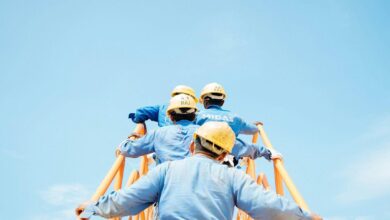Interview: What Are The Advantages Of Remote Work?
We interviewed Silvia Valencia, a psychologist with experience in human resources, about the changes that the return to the office has brought.

Over time, many of the people who work from home, already used to it, have been reluctant to return to the presence now that the restrictions have given way. Photo: Unsplash
LatinAmerican Post | Vanesa López Romero
Listen to this article
Leer en español: Entrevista: ¿Hay ventajas del teletrabajo sobre la presencialidad?
Broadly speaking, the constant changes that the COVID-19 pandemic has brought with it have affected society socially, politically, and economically. But if we look more closely we realize that these consequences also come from the effect on each individual. It is clear that at the beginning of the pandemic, the sudden changes that had to be experienced had consequences in the personal lives of each person. In the case of employees, many of them had to continue assisting companies under very strict biosecurity measures, while others had to get used to doing their work from home. Over time, many of the people who work from home, have been reluctant to return to the office now that the restrictions have given way. In this interview with Silvia Valencia, an expert psychologist in human resources, we talk about this tendency to not want to go back to the office, the advantages and disadvantages of teleworking, and more on this topic.
LatinAmerican Post : With the advance of the application of vaccines, it has been proposed to return to offices, but some people who worked virtually during the pandemic so far have shown resistance to returning to offices / face-to-face places of work. Why do you think this happens?
Silvia Valencia: I think there are three groups of people: those who are resistant, those who are happy not to be at home all the time, and those who have reasons both to prefer remote work and being present; These are the people who propose the hybrid model, some days at home and other days in the office. Focusing on the first group, what we have seen is that changing the habit is difficult. Just as it was difficult to go from offices to virtuality, going back is also difficult. Changing habits, and having new expenses is tough for people.
Also read: Does The COVID-19 Vaccine Really Work To Prevent Hospitalizations?
Savings also weigh heavily in the mind of many. People realized that by being at home they save on transportation, food, overhead expenses that are incurred when they are away from home, but they also save time. In addition, people have highly valued being able to be at home, being able to share with their family, and now there is the fear of losing those spaces that were won with virtuality.
Additionally, there is a very important point: there is a lot of fear. This disease has killed thousands of people and although the vaccine shows that the number is low, people are still afraid of being part of that small percentage of people who, despite being vaccinated, become infected and die. There is fear of new variants. People are scared because we already know how serious COVID-19 is after almost two years of living through this pandemic.
LP: Changes have been the constant of the pandemic, what do you think is the correct process to return to the office? How should employers promote this return? Are there advantages in being present over teleworking? Is remote work better?
SV: I think there is no correct process. This is not a prescription. But right now we have the advantage that we can do a transition. When we went from presence to virtuality there was no process, everything was sudden. One day we were working and the next day we were locked up relearning how to work. Right now we have a tremendous opportunity for this to be a process. The processes allow planning, thinking, allow time, allow trial and error.
In these cases, and I think it helps to do exercises consciously about what we have gained and lost, from the micro to the macro level or from the macro to the micro-level. What has the employee gained and what has he lost in virtuality? What has the area gained and what has it lost in virtuality? What has the company gained and what has it lost in virtuality? What has the business, the sector, the economy gained and what has it lost in virtuality? Then you have to think about how you can keep what has been gained and how to recover what has been lost. This is an exercise that we all must do. This is not a recipe, as I already mentioned, it is different for everyone. As we carry out this exercise, we can build a path where we combine the best of both worlds.
LP: In the event of another outbreak or a fifth worldwide wave, wouldn't it be counterproductive to go back to face-to-face and then go back to remote work immediately?
SV: The global trend is the hybrid model where these two worlds are combined. It would not be necessary to speak of returning to the office to return later to the virtuality. Today we are in the middle. Each business is in a different place in those nuances between office work and remote work.
But in case we have to lock ourselves in again, we already know how to do it, we already did it, we already suffer and live. I think the most difficult thing was that moment when we didn't know how to do it. Where we did not have the systems, nor the platforms, nor the methodologies. But we already have them. Each company built its best version, the one that best suits each one. I'm really not afraid of that. I am more afraid of the virus than of the changes it can generate.




